Huawei Mate XS + MatePad 5G hands-on: Foldables come to the post-Google era

A year ago, I sat in a cramped meeting room somewhere in the bowels of Barcelona's Fira Gran Via for Mobile World Congress to get my first look at the Huawei Mate X. It was the dawn of the age of foldable phones, and using this device for the first time served as a tantalizing early glimpse of the future.
Twelve months on, a lot has changed — both for Huawei, and for MWC. For starters, this year's mobile show has been cancelled amid coronavirus fears. And Huawei itself is also having a pretty tough time, having been placed on the U.S.'s Entity List last May, and prevented from preloading Google services on its newer phones. As a result, perhaps, the super-expensive Mate X hasn't seen any wide release outside of mainland China.
But as the company shows off its two new Android devices for early 2020, there's fresh enthusiasm and confidence about the future of Huawei outside of the Google umbrella. Huawei hasn't been sitting on its hands for the nine months since news of the U.S. ban broke. Instead, it's knuckled down and developed its own ecosystem, based around Huawei Mobile Services and its AppGallery storefront, while also splashing the cash in a bid to woo app developers.
Now, the newly Google-free Huawei is ready to sell new products in the West, starting with the very recent Mate 30 Pro launch in Europe, and continuing with two new products unveiled in London today.
The first is the Mate XS, a fairly straightforward successor to the Mate X. And then there's Huawei MatePad, that most rare of things, a high-end Android tablet that looks like a pretty competitive product.
The Mate XS is a tuned-up, upgraded Mate X.
The Mate XS iterates upon the internals and externals of the previous model. In fact, most would struggle to tell the two apart from a distance. Thanks to early press statements by Huawei CEO Richard Yu, we already knew a higher-specced Mate X variant was coming, and the Mate XS delivers on that promise. It's powered by a Kirin 990 5G processor, the same chipset at the heart of the Mate 30 Pro 5G and the upcoming P40 series. And the camera also gets a considerable upgrade, with a main shooter and telephoto transplanted from the Mate 30, and an ultrawide taken from the P30 Pro. (That adds up to a 40-megapixel main, 8-megapixel 3X zoom and 13-megapixel ultrawide setup.)

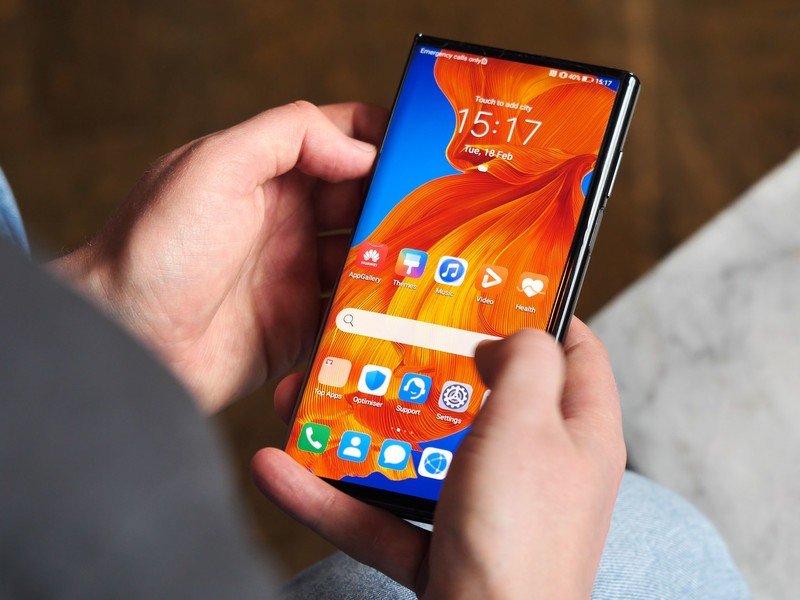
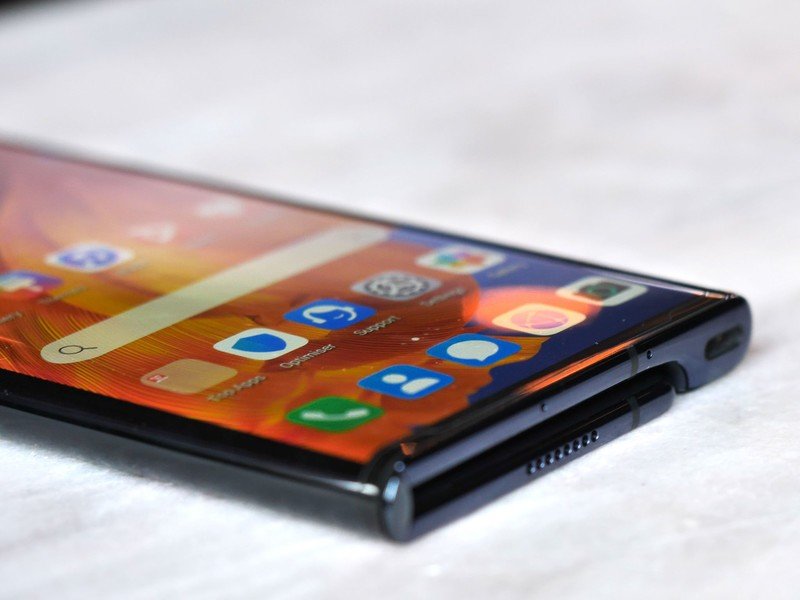
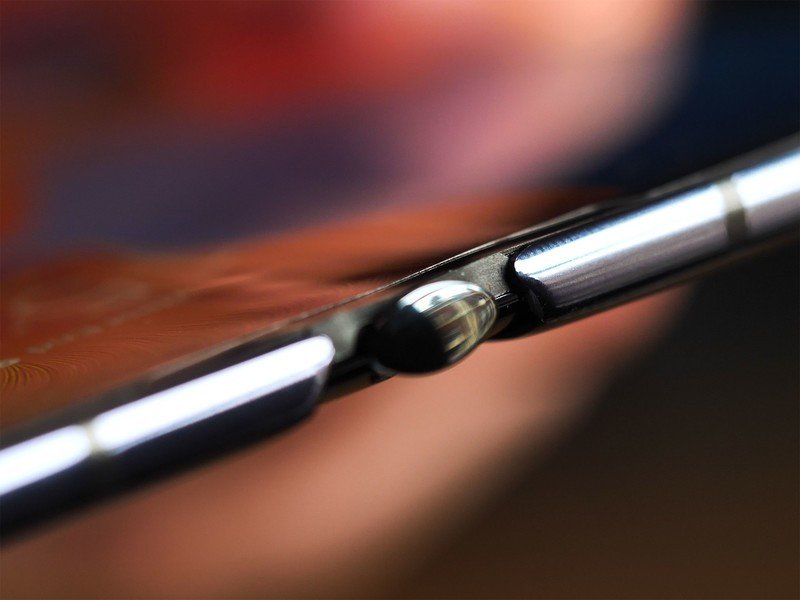

Because of the way this phone works, this quad-camera array is used for both selfies and regular photography. Since you can just flip the entire thing around, there's no need for a hole-punch selfie shooter or anything else like that. It's just as easy to snap a selfie with any one of these three cameras as it is to take a traditional shot from behind the camera.
Get the latest news from Android Central, your trusted companion in the world of Android
The upgrades from the Mate X go beyond internal specs, though. The phone's patented falcon wing hinge has been tweaked for added durability, and the area around the hinge is noticeably more sturdy than in the older model, with protective covers around the outside. And the foldable area of the screen has a less pronounced crease in this model, thanks to a superior, reengineered display coating. It's still plastic, but feels tighter and clearer than the older Mate X. And on the inside, Huawei has even designed a new "flying fish" shaped heat spreader to ensure adequate cooling whether the Mate XS is opened or closed.
The same 4,500mAh dual battery setup from the Mate X remains, with support for 55W Huawei SuperCharging over USB-C, capable of reviving a dead Mate XS back up to 85% charge in 30 minutes.
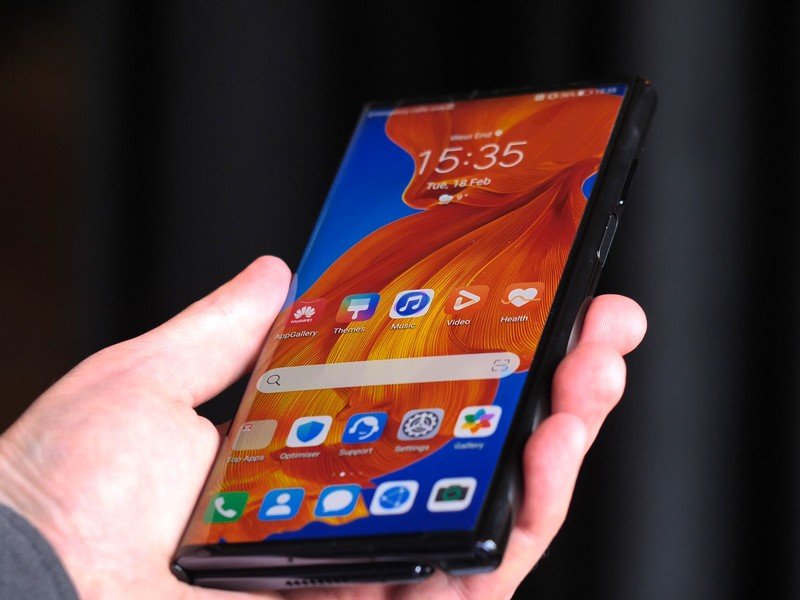
Huawei has built a foldable that's a better phone and a better tablet than its rivals.
While the external changes compared to the Mate X are subtle, this is still a phenomenal looking device. It's exceptionally thin outside of the grip area on the right-hand side, with slim bezels when extended out. It's also surprisingly stylish even when folded shut, looking like a chunkier Mate 30 Pro. You'll still notice the extra heft in your pocket compared to a traditional smartphone, but much less so than, for example, a Galaxy Fold.
So the fundamentals of the Mate XS are very familiar. In what you might call "phone mode," it's a slightly chunkier 6.6-inch Android smartphone, with a clean, notchless display. Around back, there's a slimmer secondary 6.38-inch screen area, which lets you take photos or selfies. Fold it out, though, by pressing the red release switch, and you get a svelte 8-inch tablet display completely free from any protrusions or aberrations.
For me, the Mate XS as a product is as exciting as the Mate X before it because of the way it handles the transition between phone and tablet. Unlike the Galaxy Fold, you don't get a tiny, compromised experience when the phone is closed. It's very much a full-sized, full-featured smartphone. Same deal with photography — this isn't a subpar shooter, it's mostly the same as the Mate 30's cameras, with the added benefit of better selfies because of the Mate XS's unique form factor.
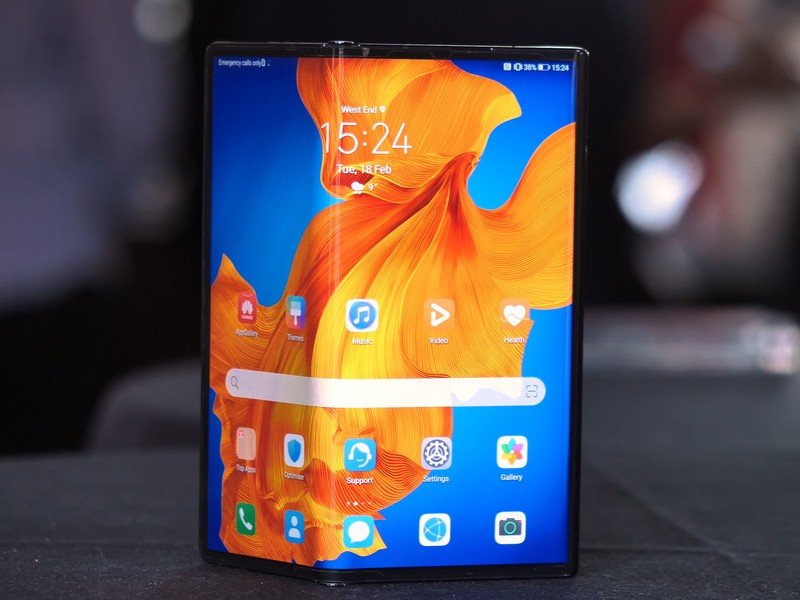
Of course, all that functionality will surely come at a cost. Huawei hasn't revealed the price of the Mate XS at press time, but the Mate X's near $2500 figure all but guarantees that the new model will carry a similarly eye-watering price tag.
No Google services, but impressive multitasking features.
A great big pocketable screen, however, is only as good as the software you can run on it. So let's address the big disadvantage before we go any further: The Mate XS can't run Google mobile services out of the box, because of Huawei's placement on the US's Entity List. It'll likely be possible to sideload Google's services onto the phone in the same way many folks have on the Mate 30 Pro. But regardless, that's extra hassle that most people won't want to bother with.
More: From the Editor's Desk: Huawei's rock is also its hard place
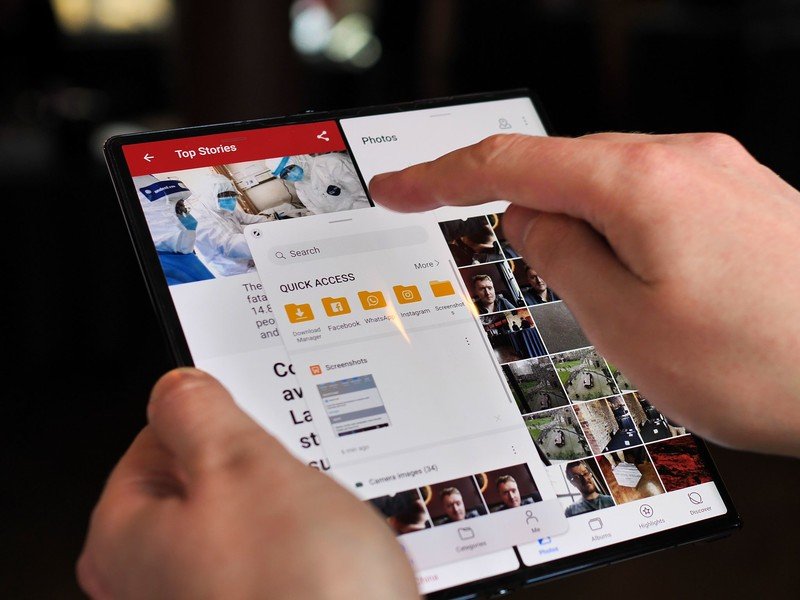

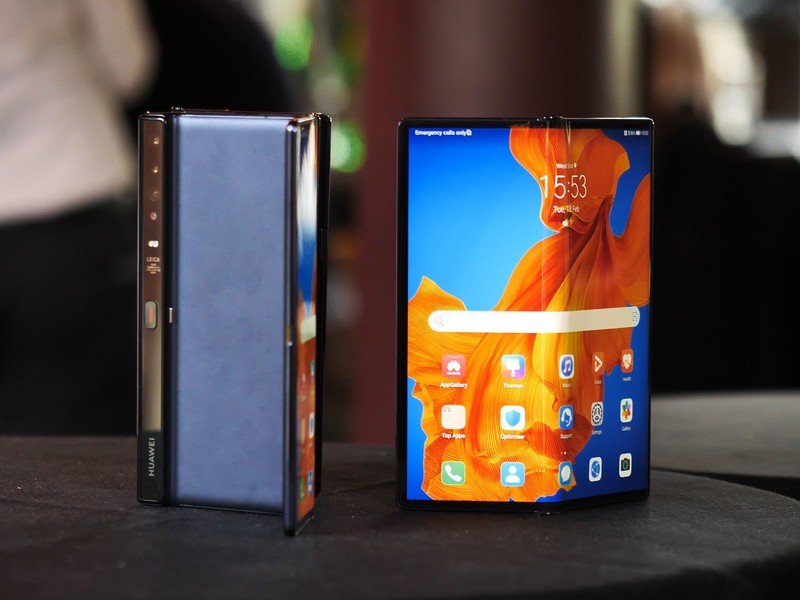
Huawei's pulling out all the stops to build out its own AppGallery platform, but despite its considerable efforts, it's still early days. Many common Android apps can be found on the new storefront, but more obscure offerings like banking apps are likely to be unavailable, leaving sideloading from third-party sites as the only alternative. So the lack of GMS remains a serious barrier to entry, and will continue to be for the foreseeable future. Building a whole new mobile ecosystem takes time.
On the other hand, Huawei has an excellent multitasking system for its new devices that makes it easier to take full advantage of that vast foldable canvas. The devices I played with at the company's London briefing were set up to use gesture navigation by default, and long-holding the back gesture would conjure up a navigation bar from which you could drag in apps to either the top, bottom, left or right segment of the screen, depending on whether the phone was unfolded or not. You can use two apps at a time, in addition to a floating app, which can be added by tapping an app in the navigation bar.
It's a really easy way to split the screen between various apps, and far quicker than the default Android task-switching method. (Split-screen in particular is buried behind additional menu items in stock Android 10.)
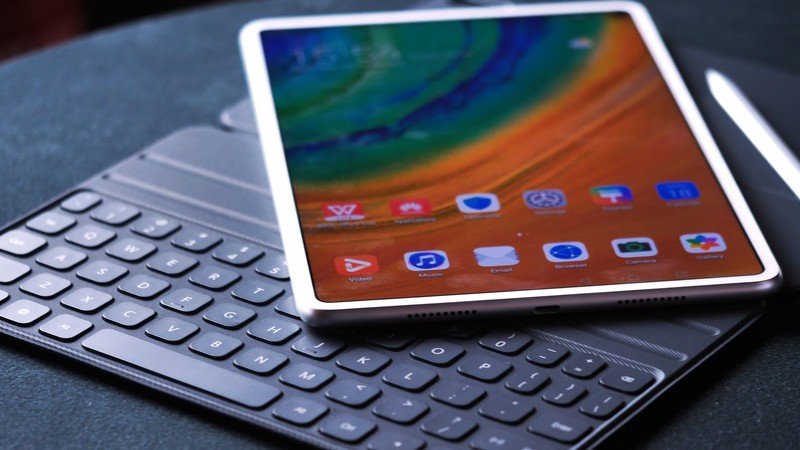
Huawei's new MatePad 5G is perhaps the only serious, high-end Android tablet.
All of these software features carry over to the second Android device Huawei is announcing today, the new Huawei MatePad 5G — a 10.8-inch, 16:10 tablet with (you guessed it) 5G connectivity.
The name of the new slate is significant — Huawei's older tablets have been branded as MediaPads, and as such, the software has been pretty basic, because they've largely been pitched as no-frills slabs for media consumption. The MatePad, as you might've guessed, brings some Mate DNA to the table, with more of a focus on productivity and high performance.
A big part of that is the aforementioned 5G connectivity. The MatePad 5G is aggressively 5G — there's no 4G-only or WiFi-only version. And the front face is almost all screen, thanks to a hole-punch display and 90 percent screen-to-body ratio. It shares the same impressive internal hardware of the Mate XS too, based around the Kirin 990 5G platform.
And while Huawei's EMUI software on a tablet was a pretty ropey experience in the past, the company has leveled up its Android software this time around. It has the same multitasking chops you'll find on the Mate XS, along with new drawing capabilities thanks to the Huawei M-Pen stylus. It's clear Huawei's drawn some inspiration from the iPad with the way this all works together, and that's not a bad thing.



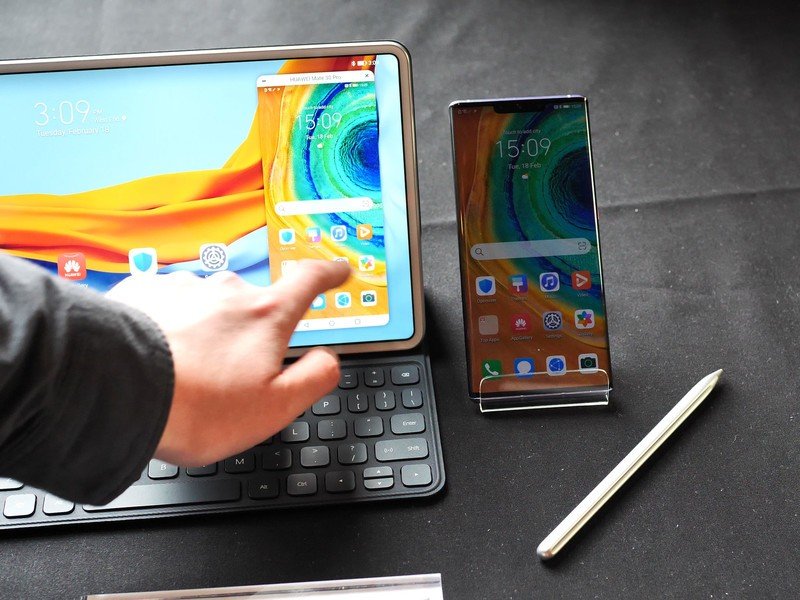
The device itself features a magnesium alloy frame with no visible antenna lines, and outer bezels of just 4.9mm. We only got a look at the vanilla black and white versions of the MatePad, but vegan leather color options will also be available, similar to what we saw in the Mate 30 last year. Naturally, there's also a keyboard attachment that feels pretty nice to type on, with a sturdy feel and a decent amount of key travel.
Huawei might be the only brand still building flagship Android tablets, and, ironically, it's doing so without any official Google support. That makes it all the more impressive that these tablets are able to support not just the advanced multitasking of the Mate XS, but also the new App Multiplier feature. Huawei's working with developers to enable apps to intelligently expand to fill the whole screen by using two windows simultaneously.
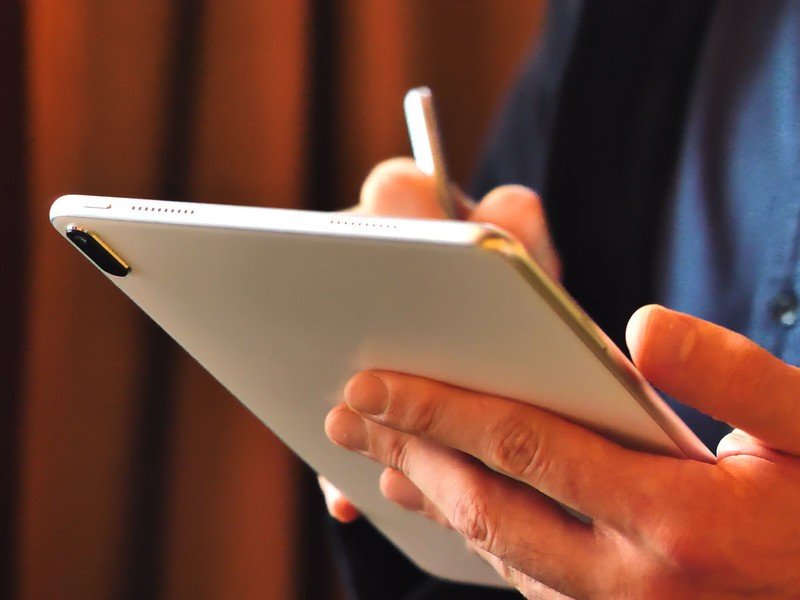
This does require the app developer to work with Huawei to enable it, but the company says it has around 1000 apps in the can so far. We'll have to wait on a more extended review period with the new MatePad to see just how useful App Multiplier is in the real world. Nevertheless, Huawei's demonstration, which used a customized version of the Booking.com app, was impressive, with the app expanding into the available screen space to show hotel search results.
It's also possible to pair the MatePad with your Huawei phone and control it via a miniature window on the tablet, should you wish to. (A similar feature is also available on Huawei's MateBook notebooks.)
A year on from my first introduction to Huawei's foldable phone, It's clear the company is serious about building out its own ecosystem of devices, despite the many challenges it faces. Out of necessity, it's pushing AppGallery and its own APIs to plug the gap left by Google's services, and it's doing a decent job thus far. It's also inking new partnership deals with third parties like Devialet. The French audiophile label is co-branded on another of the products announced at Huawei's press conference today, the Huawei Sound X.

Looking like the offspring of an Apple HomePod and an 2013-era "trashcan" Mac Pro, the Sound X promises easy pairing and other smart features from Huawei, paired with premium components and Devialet's audio know-how. Think rare-earth magnets for the speakers, 93 dB SPL (sound pressure level) and spatially aware sound that detects the acoustics of the room it's placed in. It's analogous to Huawei's partnership with Leica, which has seen it rise to the top of the smartphone camera charts.
Unlike the original Mate X, both the Mate XS, Sound X and MatePad 5G will all be launching internationally, not just in mainland China. Between these new products and the existing Mate 30 Pro, Huawei has a decent launch pad for its new ecosystem. These gadgets definitely shouldn't be dismissed just because there's no Google stuff preloaded.
But for Huawei, the real moment of truth will come in around a month, when we're expecting to see the P40 series of phones arriving — the first major flagship Huawei phones of the year, and a major test for its burgeoning Google-less ecosystem.

Alex was with Android Central for over a decade, producing written and video content for the site, and served as global Executive Editor from 2016 to 2022.
